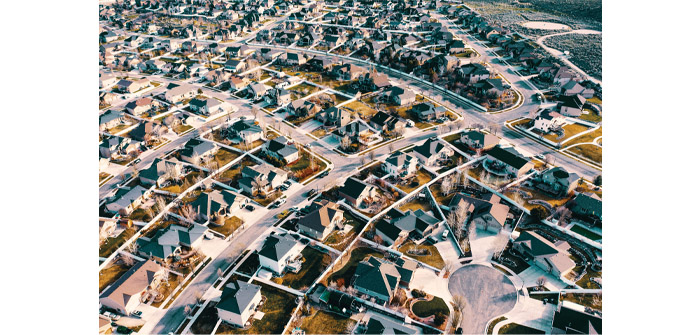(Photo courtesy of The Wallace Group, Inc.)
The engineers and geologists at Wallace Group have provided geotechnical engineering services to construction projects in Central Oregon for over 25 years. New construction challenges have surfaced in central Oregon’s urban environment due to diminishing land availability. Gone is the time when we studied level, untouched sites within the urban core area. Buildings are closer together than ever and with valuable real estate, buildings now have basements, underground parking, and soar to the maximum heights allowed. As geotechnical engineers, we study the soil and rock at project sites and develop foundation, grading, and drainage recommendations for lasting performance and safety. Over the years, the engineering challenges have changed based on the available sites remaining and site constraints due to development boundaries. Geotechnical studies are now more important than ever. Let’s dive in and explore the main issues that lead to costly design changes or even stop projects altogether.
Building upon a previously developed site requires reconstruction. That is, demolishing old structures and replacing them with something new. Sites being re-purposed for new uses, think Bend Central District (BCD), have a high likelihood of being underlain by undocumented fill (soil) and construction debris. These historic sites were typically filled before adequate standards or codes, modern construction equipment, geotechnical oversight, and record keeping. New structures should never be supported on undocumented fill materials.
Bend’s history as a source for pumice has left behind many former open pit mines. In general, when pumice extraction was complete, the area was loosely backfilled or ‘reclaimed’ with whatever material was around with little thought that the area would be reused. From the surface today, it might be impossible to discern the former pit boundaries. These reclamation sites represent the most expansive and thickest accumulations of undocumented fill in the Bend area. In some former pits, the fill extends 65 feet deep.
The region was also host to abundant logging and lumber processing activities. It was common to toss the wood shavings or logs to the side or bury them below ground in pits. Buried organic waste decays over time causing the ground to settle. Decomposition of organic material has led to some of the most significant building settlement damage in the area.
The few undeveloped sites remaining in central Oregon’s urban areas tend to have slopes or neighboring buildings very close by. Constructing new buildings adjacent to existing buildings is especially challenging. Often, retaining walls and temporary construction easements are required just to do the work. This becomes even more difficult when you need to remove undocumented fill. Expensive supports, such as temporary shoring, may also be needed to prevent damage to adjacent properties.
Exposed rock cuts are also more prevalent on undeveloped sloping sites. While shallow basalt bedrock is common, the rock below our feet is multi-layered with soil, cinder, tuff, and volcanic ash to name a few. A common concern with basalt bedrock is also the presence of systemic voids or ‘lava tubes’ which are quite common on the east side of Bend and Redmond. Shallow lava tubes left unaccounted for during site development can cause major problems. Understanding the nature and engineering properties of the rock requires geotechnical drilling and sampling techniques.
And lastly, northern Deschutes County is known to have relatively shallow bedrock and deep groundwater. However, very shallow groundwater, sometimes a few feet or less below the surface, is found in La Pine, Sunriver, Tumalo, and Prineville. The shallow groundwater can create difficulty during construction and lead to moist environments (mold and decay) in crawl spaces. Additionally, the groundwater foreshadows the weak, underlying soil deposits that are left behind. Such is the case in Sunriver and La Pine which were formerly shallow lakes. The weak lakebed deposits are now the surface soil that we are building on today. The engineering properties of the lakebed deposits are complex and require diligence in sampling and laboratory analysis.
What can be done to understand subsurface conditions at your site? A geotechnical investigation is the best way to identify undocumented fill, construction debris, soft soil, lava tubes, and wood waste. If these conditions are not identified and mitigated before new construction starts, it can halt a project quickly. Or worse, the building may develop future defects with remedial costs exceeding the front-end geotechnical engineering fees by 10x, or more.
The grounds below your next project are likely to be complex and difficult to discern from the surface. In order to give your project the best chance of success, subsurface exploration and geotechnical analysis is critical. Fortunately, Wallace Group has local experts with the wealth of knowledge and experience needed to make your next project a success. Contact our Bend office at 541-382-4707 for a consultation.





